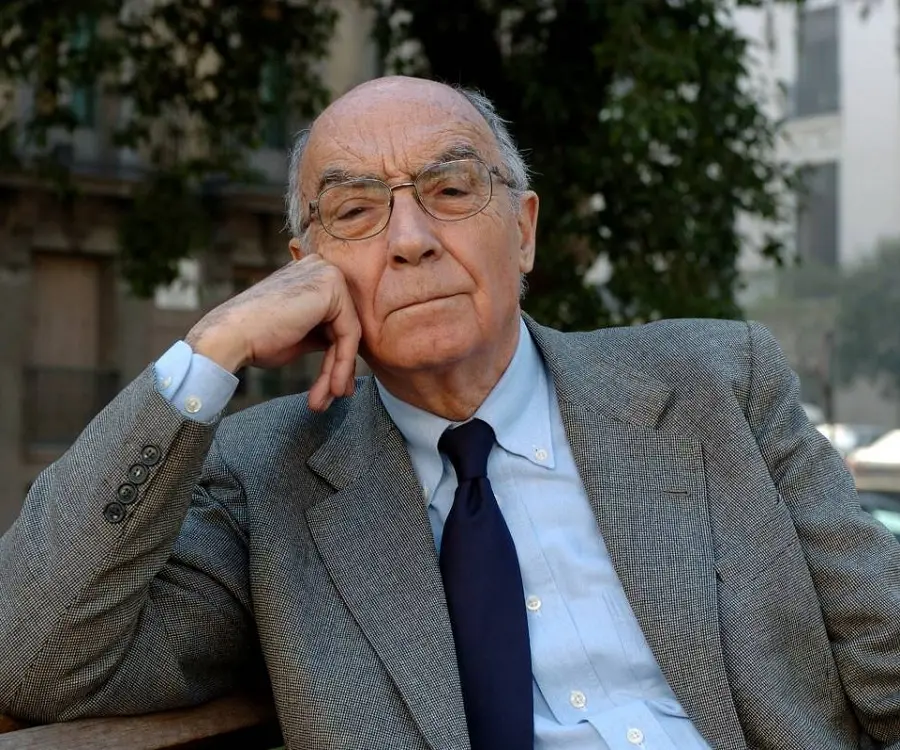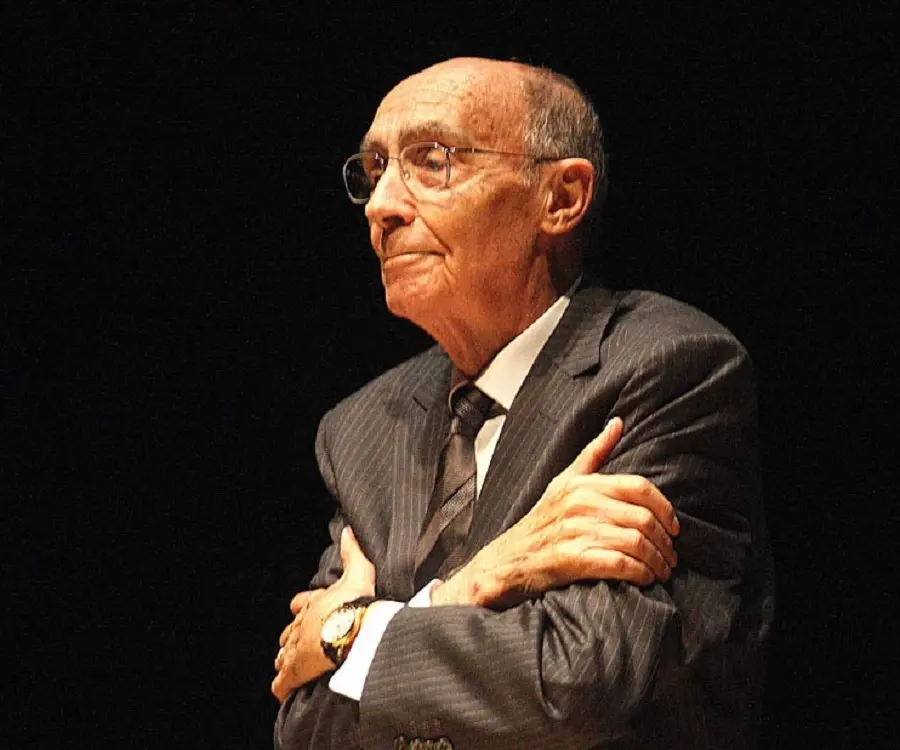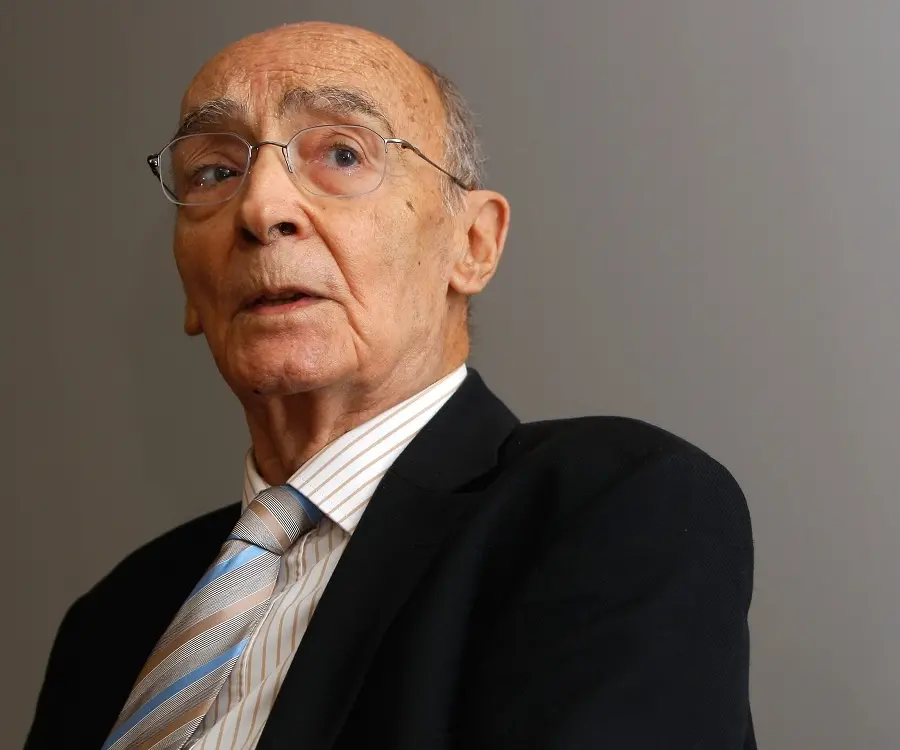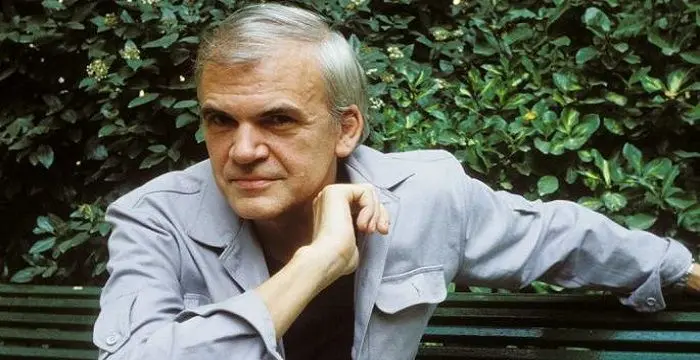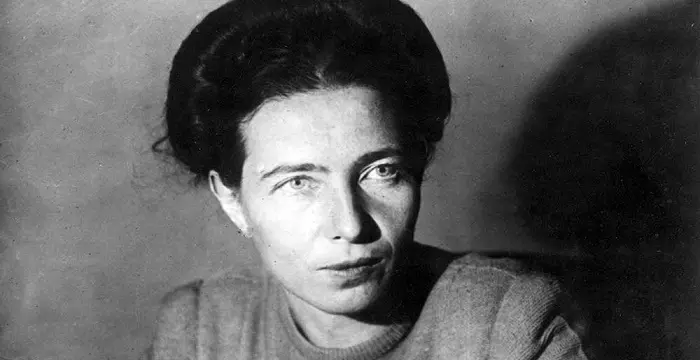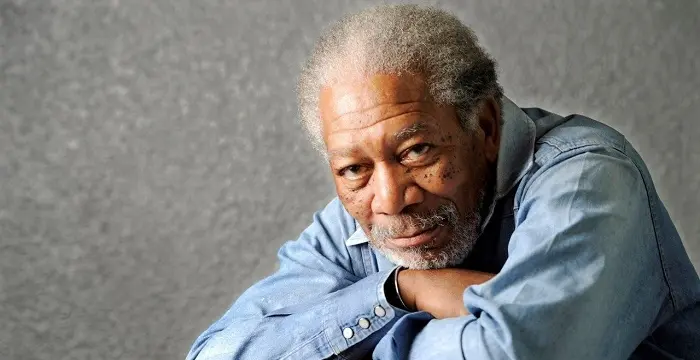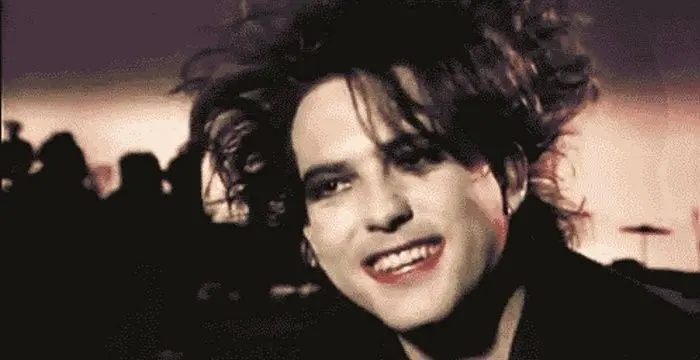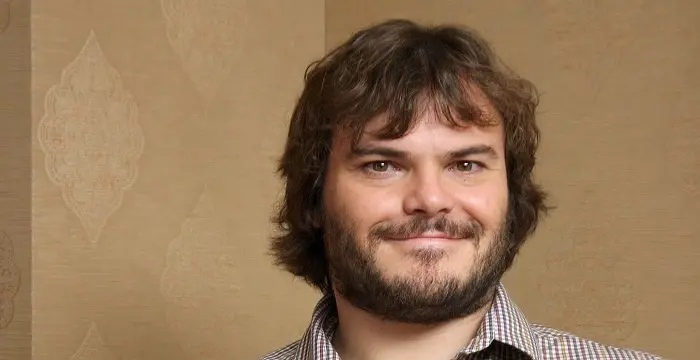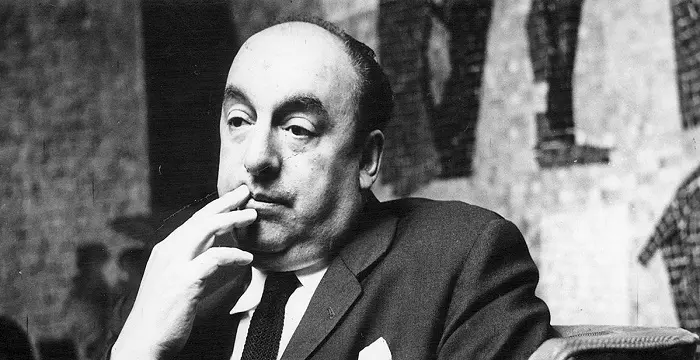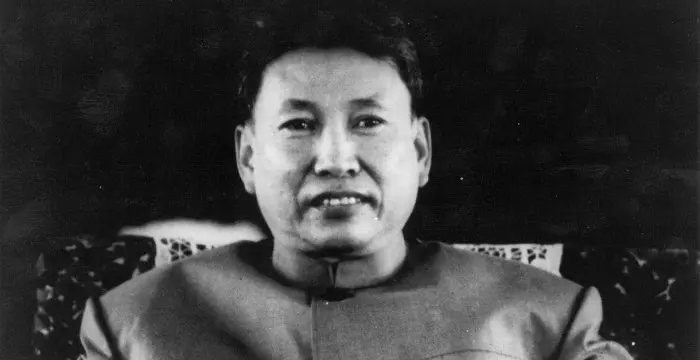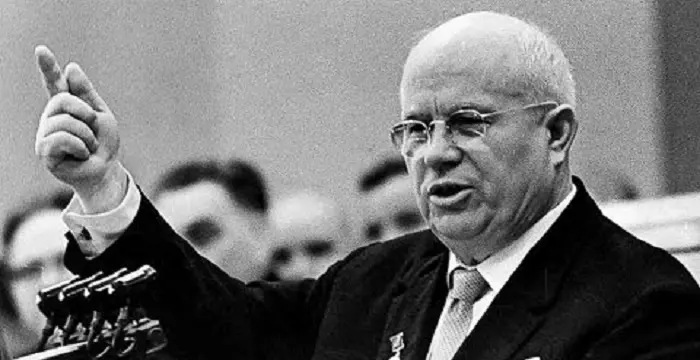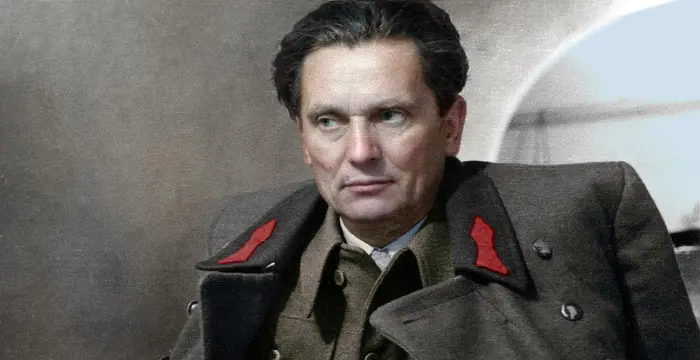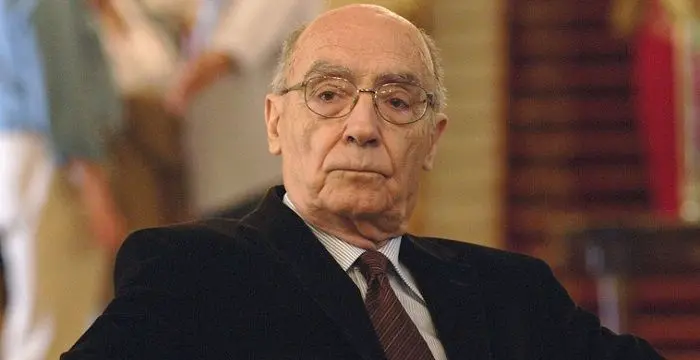
José Saramago - Novelists, Birthday and Life
José Saramago's Personal Details
Jose Saramago was a renowned Portuguese novelist and a Nobel Prize winner in Literature
| Information | Detail |
|---|---|
| Birthday | November 16, 1922 |
| Died on | June 18, 2010 |
| Nationality | Portuguese |
| Famous | Atheists, Communists, Writers, Novelists |
| Ideologies | Communists |
| Spouses | Ilda Reis, Isabel da Nóbrega, Pilar del Rio |
| Siblings | Francisco de Sousa |
| Known as | Jose Saramago, José de Sousa Saramago, José de Sousa Saramago, GColSE |
| Childrens | Violante dos Reis Saramago |
| Founder / Co-Founder |
|
| Birth Place | Azinhaga |
| Religion | Atheism |
| Gender | Male |
| Father | José de Sousa |
| Mother | Maria Da Piedade |
| Sun Sign | Scorpio |
| Born in | Azinhaga |
| Famous as | Writer |
| Died at Age | 87 |
// Famous Writers
Joyce Meyer
Joyce Meyer is a Christian author and speaker. This biography provides detailed information about her childhood, life, achievements, works & timeline
Temple Grandin
Temple Grandin is a well-known American writer, autistic activist and animal expert. This biography profiles her childhood, life, achievements, career and timeline
Tennessee Williams
Tennessee Williams was one of the greatest playwrights of the 20th century. This biography of Tennessee Williams provides detailed information about his childhood, life, achievements, works and timeline.
José Saramago's photo
Who is José Saramago?
Jose Saramago was a Nobel-winning Portuguese novelist, journalist, translator, and playwright. Considered to be the most productive Portuguese-language novelist in the 20th century, success did not come easily to him. He was able to earn recognition only during his sixties after working rigorously for years. Even though he took up writing at an early age, his works didn’t really get appreciated, especially in Portugal. After taking up a variety of odd jobs to sustain his living, he switched to making a career in literature after the 1974 Carnation Revolution. Eventually, he published a series of novels, but it was his 1980 book ‘Raised from the Ground’ which brought him on the forefront in the literary world. And with the release of ‘Baltasar and Blimunda’ in 1982, he became an international novelist. Through his hard work, determination and wonderful imagination, he went on to become one of the finest Portuguese writers of his generation. His works were highly acclaimed and honored with several awards, including the prestigious Nobel Prize in Literature, thereby making him the first Portuguese-language writer to receive this award. Some of his popular works include ‘The Year of the Death of Ricardo Reis’, ‘The Gospel According to Jesus Christ’, ‘The Skylight’, ‘The Notes’, ‘Blindness’, and ‘The Elephant’s Journey’
// Famous Novelists
Charles Bukowski
Charles Bukowski was a German-born American novelist, short story writer and poet. With this biography, learn in details about his childhood, life, works, career and timeline
Milan Kundera
Milan Kundera is a Czech-born French writer known for his erotic and political writings. This biography of Milan Kundera provides detailed information about his childhood, life, achievements, works & timeline.
Simone de Beauvoir
Simone de Beauvoir was an eminent French writer, intellectual, activist, and philosopher. This biography profiles her childhood, life, thoughts, achievements and timeline.
Childhood & Personal Life
Jose Saramago was born as Jose se Sousa Saramago on November 16, 1922, in Azinhaga village, Ribatejo Province, Portugal, into a family of poor peasants, to Jose de Sousa and Maria de Piedade.
His family relocated to Lisbon in 1924, where his father found employment as a police officer. His illiterate grandparents introduced him to folklore and fantasy, whom he spent his holidays with.
Since his family continued to face economic hardships continuously, he was shifted from a grammar school to a technical school when he was 12.
Career
After completing his education, he took up various jobs, such as car mechanic, metalworker, translator, journalist, and assistant editor of a newspaper, before taking up writing full-time.
In 1947, he released his first novel, ‘Land of Sin’, which was originally titled ‘The Widow’ but changed by the publisher in the hope of making more business.
He went to write another novel ‘The Skylight’ but wasn’t published and penned a few pages of another one which was later canceled.
He became jobless in 1949 and found employment at a metal company. However, in late 1950, he took up the job of a production manager at a publishing company, ‘Estudios Cor’.
To further contribute to his family finances, he started translating in 1955, which he continued till 1981. Some of the popular writers he translated included Raymond Bayer, Jean Cassou, Tolstoi, Henri Focillon, and Par Lagerkvist.
For 19 years, he stayed away from writing and returned back to literature in 1966 by publishing his first collection of poems titled ‘The Possible Poems’.
In 1969, he became a member of Portugal’s Communist Party and remained associated with it for the rest of his life.
Subsequently, he released a series of works in the following years, namely, a poetry book ‘Probably Joy’ (1970) and two volumes of newspaper articles – ‘From this World and the Other’ (1971) and ‘The Traveller’s Baggage’ (1973).
He left ‘Estudios Cor’ in 1971 and joined the evening newspaper ‘Diario de Lisboa’ as an editor. After two years, he moved to morning daily ‘Diario de Noticias’ as a deputy director in 1974.
In the wake of the Carnation Revolution of 1974, he was forced to leave the job, after which he switched to literature permanently. His two books – ‘The Year of 1993’ (1975) and ‘The Notes’ (1976) were inspired by this revolutionary process.
His 1980 novel ‘Raised from the Ground’ brought him into the limelight and got him recognition as a novelist. However, it was his 1982 novel ‘Baltasar and Blimunda’ that brought him international acclaim and catapulted his career.
He went to publish a number of successful works, such as ‘The Year of the Death of Ricardo Reis’ (1984), ‘The Stone Raft’ (1986), and ‘The History of the Siege of Lisbon’ (1989).
In 1991, he published ‘The Gospel According to Jesus Christ’. However, the Portuguese conservative government banned its nomination for Aristeion Prize alleging that it offended the Catholic and Jewish communities.
Disappointed with the people’s response to his ‘The Gospel’, he left Lisbon and moved to Lanzarote, an island in the Canary Islands, Spain, into self-imposed symbolic exile with his wife.
Some of his other popular works were ‘Blindness’ (1995), ‘All the Names’ (1997), ‘The Double’ (2002), ‘Death with Interruptions’ (2005), ‘The Elephant’s Journey’ (2008), and ‘Cain’ (2009).
He established the European Writers’ Parliament (EWP), along with fellow Nobel laureate Orhan Pamuk. However, he died before attending its opening ceremony in 2010.
Awards & Achievements
His novel ‘Raised from the Ground’ was awarded with the ‘City of Lisbon Prize’.
He won the Portuguese PEN Club Award for his novel ‘Baltasar and Blimunda’.
His novel ‘The Year of the Death of Ricardo Reis’ was honored with the Britain’s Independent Foreign Fiction Prize.
He received the Camoes Prize in 1995.
In 1998, he became the first ever Portuguese language writer to be honored with the prestigious Nobel Prize for Literature.
His ‘The Elephant’s Journey’ was shortlisted for Sao Paulo Prize for Literature under the ‘Best Book of the Year’ category, in 2009.
Personal Life & Legacy
In 1944, he married Ilda Reis, a typist with the Railway Company, with whom he had a daughter – Violante dos Reis Saramago in 1947. The relationship, however, broke after 26 years in 1970.
He met Pilar del Rio, a Spanish journalist, in 1986, and married her in 1988. Currently, she is responsible for translating his books into Spanish.
In order to inspire young budding writers, the biennial Premio Literario Jose Saramago (or Jose Saramago Literary Prize) was started in 1999.
He died on June 18, 2010, after suffering from leukemia, at the age of 87. His funeral was held in downtown Lisbon on June 20 and after two days of national mourning, his body was cremated at Alto de Sao Joao cemetery.
Half of his ashes were taken to his native village, Azinhaga, while the other half was placed under an olive tree at his home in Lanzarote, where he spent the last years of his life.
His novel ‘The Skylight’, written in the late 1940s, was published posthumously in 2012.
Trivia
The word ‘Saramago’, which literally means ‘wild radish’ in Portuguese, was actually his father’s nickname, and was accidentally added on his birth certificate and hence, became his surname.
// Famous Atheists
Morgan Freeman
Morgan Freeman is an Academy Award winning actor known for his work in movies like ‘Street Smart’, ‘Driving Miss Daisy’ and ‘Million Dollar Baby’. This biography provides detailed information about his childhood, life, achievements, works & timeline.
Robert Smith
Robert Smith is an English musician and the lead singer of the British rock band, ‘The Cure.’ This biography of Robert Smith gives detailed information on his profile, childhood, life and timeline.
Jack Black
Jack Black is a renowned American actor-producer and voice artist. Explore this biography to learn more about his profile, childhood, career and timeline
José Saramago's awards
| Year | Name | Award |
|---|---|---|
Other | ||
| 0 | Nobel Prize in Literature - 1998 | |
| 0 | Camões Prize | |
José Saramago biography timelines
- // 16th Nov 1922Jose Saramago was born as Jose se Sousa Saramago on November 16, 1922, in Azinhaga village, Ribatejo Province, Portugal, into a family of poor peasants, to Jose de Sousa and Maria de Piedade.
- // 1924His family relocated to Lisbon in 1924, where his father found employment as a police officer. His illiterate grandparents introduced him to folklore and fantasy, whom he spent his holidays with.
- // 1944 To 1970In 1944, he married Ilda Reis, a typist with the Railway Company, with whom he had a daughter – Violante dos Reis Saramago in 1947. The relationship, however, broke after 26 years in 1970.
- // 1947In 1947, he released his first novel, ‘Land of Sin’, which was originally titled ‘The Widow’ but changed by the publisher in the hope of making more business.
- // 1949 To 1950He became jobless in 1949 and found employment at a metal company. However, in late 1950, he took up the job of a production manager at a publishing company, ‘Estudios Cor’.
- // 1955 To 1981To further contribute to his family finances, he started translating in 1955, which he continued till 1981. Some of the popular writers he translated included Raymond Bayer, Jean Cassou, Tolstoi, Henri Focillon, and Par Lagerkvist.
- // 1966For 19 years, he stayed away from writing and returned back to literature in 1966 by publishing his first collection of poems titled ‘The Possible Poems’.
- // 1969In 1969, he became a member of Portugal’s Communist Party and remained associated with it for the rest of his life.
- // 1971 To 1973Subsequently, he released a series of works in the following years, namely, a poetry book ‘Probably Joy’ (1970) and two volumes of newspaper articles – ‘From this World and the Other’ (1971) and ‘The Traveller’s Baggage’ (1973).
- // 1971 To 1974He left ‘Estudios Cor’ in 1971 and joined the evening newspaper ‘Diario de Lisboa’ as an editor. After two years, he moved to morning daily ‘Diario de Noticias’ as a deputy director in 1974.
- // 1974 To 1993In the wake of the Carnation Revolution of 1974, he was forced to leave the job, after which he switched to literature permanently. His two books – ‘The Year of 1993’ (1975) and ‘The Notes’ (1976) were inspired by this revolutionary process.
- // 1980 To 1982His 1980 novel ‘Raised from the Ground’ brought him into the limelight and got him recognition as a novelist. However, it was his 1982 novel ‘Baltasar and Blimunda’ that brought him international acclaim and catapulted his career.
- // 1984 To 1989He went to publish a number of successful works, such as ‘The Year of the Death of Ricardo Reis’ (1984), ‘The Stone Raft’ (1986), and ‘The History of the Siege of Lisbon’ (1989).
- // 1986 To 1988He met Pilar del Rio, a Spanish journalist, in 1986, and married her in 1988. Currently, she is responsible for translating his books into Spanish.
- // 1991In 1991, he published ‘The Gospel According to Jesus Christ’. However, the Portuguese conservative government banned its nomination for Aristeion Prize alleging that it offended the Catholic and Jewish communities.
- // 1995 To 2009Some of his other popular works were ‘Blindness’ (1995), ‘All the Names’ (1997), ‘The Double’ (2002), ‘Death with Interruptions’ (2005), ‘The Elephant’s Journey’ (2008), and ‘Cain’ (2009).
- // 1995He received the Camoes Prize in 1995.
- // 1998In 1998, he became the first ever Portuguese language writer to be honored with the prestigious Nobel Prize for Literature.
- // 1999In order to inspire young budding writers, the biennial Premio Literario Jose Saramago (or Jose Saramago Literary Prize) was started in 1999.
- // 2009His ‘The Elephant’s Journey’ was shortlisted for Sao Paulo Prize for Literature under the ‘Best Book of the Year’ category, in 2009.
- // 2010He established the European Writers’ Parliament (EWP), along with fellow Nobel laureate Orhan Pamuk. However, he died before attending its opening ceremony in 2010.
- // 18th Jun 2010He died on June 18, 2010, after suffering from leukemia, at the age of 87. His funeral was held in downtown Lisbon on June 20 and after two days of national mourning, his body was cremated at Alto de Sao Joao cemetery.
- // 2012His novel ‘The Skylight’, written in the late 1940s, was published posthumously in 2012.
// Famous Communists
Simone de Beauvoir
Simone de Beauvoir was an eminent French writer, intellectual, activist, and philosopher. This biography profiles her childhood, life, thoughts, achievements and timeline.
Karl Marx
Karl Marx was a Prussian-German philosopher, revolutionary, historian and socialist whose communist ideologies and works laid the foundation for ‘Marxism’. Explore this biography to learn more about his childhood, life achievements, works & timeline.
Pablo Neruda
Pablo Neruda was a Chilean poet, politician and Nobel laureate. Go through this biography to learn more about his profile, childhood, life and timeline.
Pol Pot
Pol Pot was the Cambodian revolutionary who led the Khmer Rouge. This biography provides a glimpse of his childhood, career, profile and timeline.
Nikita Khrushchev
Nikita Khrushchev was a former Soviet premier. This biography gives detailed information about his childhood, life, achievements and timeline.
Josip Broz Tito
Josip Broz Tito was the powerful revolutionary leader of Yugoslav Partisans. Check this biography to know more about his childhood, life, profile and timeline.
José Saramago's FAQ
What is José Saramago birthday?
José Saramago was born at 1922-11-16
When was José Saramago died?
José Saramago was died at 2010-06-18
Where was José Saramago died?
José Saramago was died in Tías
Which age was José Saramago died?
José Saramago was died at age 87
Where is José Saramago's birth place?
José Saramago was born in Azinhaga
What is José Saramago nationalities?
José Saramago's nationalities is Portuguese
What is José Saramago ideologies?
José Saramago's ideologies is Communists
Who is José Saramago spouses?
José Saramago's spouses is Ilda Reis, Isabel da Nóbrega, Pilar del Rio
Who is José Saramago siblings?
José Saramago's siblings is Francisco de Sousa
Who is José Saramago childrens?
José Saramago's childrens is Violante dos Reis Saramago
Which company or organization was founded by José Saramago?
José Saramago was the founder/co-founder of José Saramago Foundation
What is José Saramago's religion?
José Saramago's religion is Atheism
Who is José Saramago's father?
José Saramago's father is José de Sousa
Who is José Saramago's mother?
José Saramago's mother is Maria Da Piedade
What is José Saramago's sun sign?
José Saramago is Scorpio
How famous is José Saramago?
José Saramago is famouse as Writer



